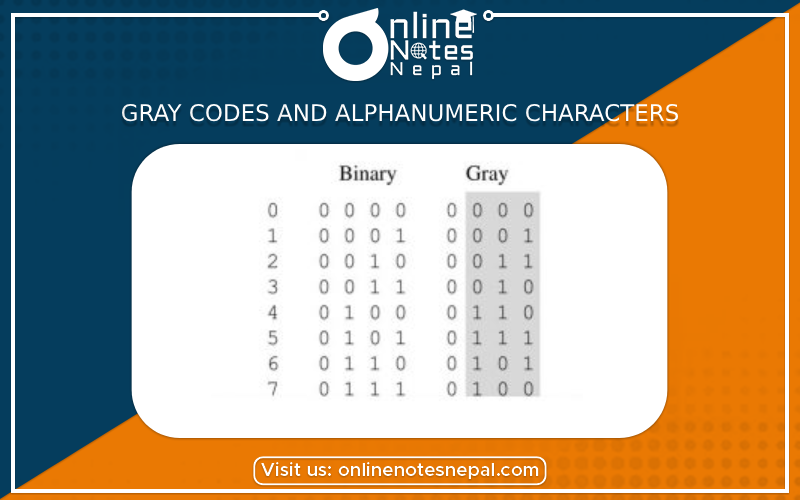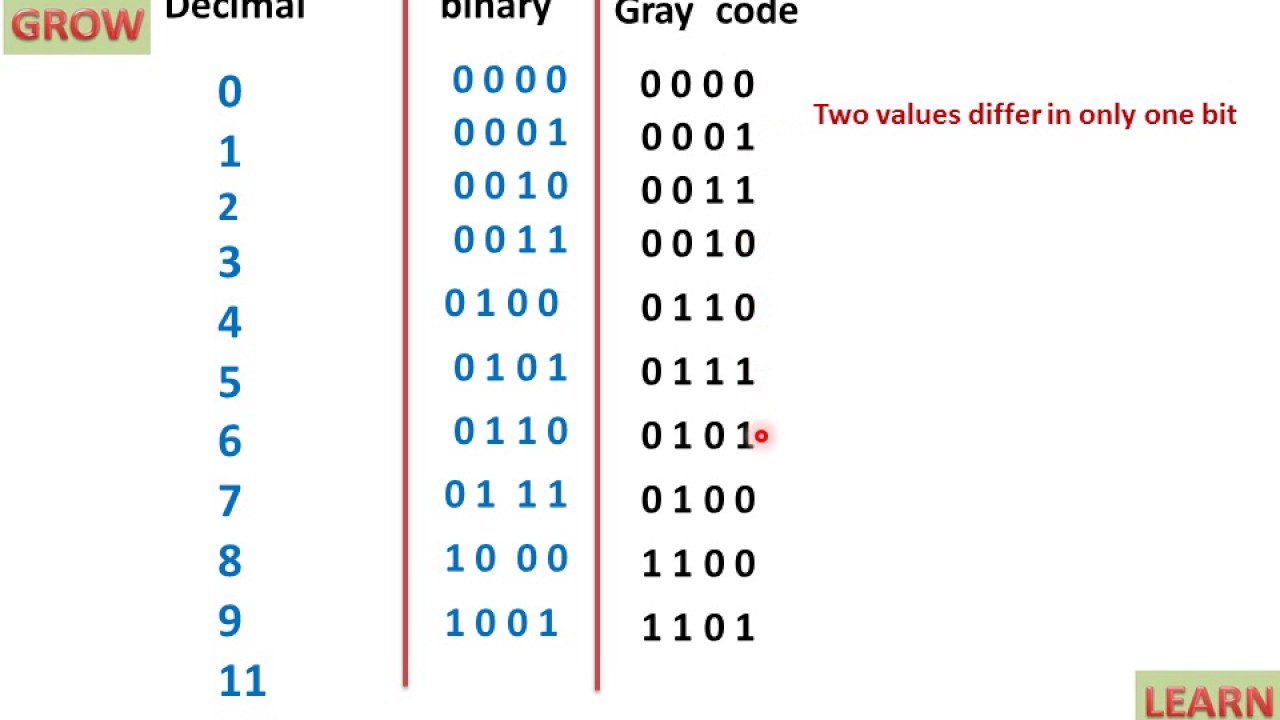Published by: Dikshya
Published date: 09 Jul 2023


Gray codes, also known as Gray binary codes or reflected binary codes, are a specific sequence of binary numbers where consecutive numbers differ by only one bit. Gray codes are widely used in applications where it is important to minimize errors during transitions between adjacent values. The conversion between Gray codes and binary codes involves specific algorithms. Let's explore the conversion processes:
1. Binary to Gray Code Conversion:
- To convert a binary number to its corresponding Gray code, you can use the following algorithm:
a. Start with the most significant bit (MSB) of the binary number and write it down as the MSB of the Gray code.
b. Proceed to the next bit (to the right) and perform an XOR (exclusive OR) operation between the current bit of the binary number and the previous bit of the Gray code. Write down the result as the next bit of the Gray code.
c. Repeat step 2 for each subsequent bit until you have converted all the bits of the binary number.
For example, let's convert the binary number 0101 to Gray code:
Binary: 0 1 0 1
Gray Code: 0 1 1 0
In this example, we start with the MSB of the binary number, which is 0, and write it down as the MSB of the Gray code. Moving to the next bit, we perform an XOR operation between 0 and 1, resulting in 1. We write down 1 as the next bit of the Gray code. Continuing this process for the remaining bits, we obtain the Gray code 0110.
2. Gray Code to Binary Conversion:
- To convert a Gray code to its corresponding binary number, you can use the following algorithm:
a. Start with the most significant bit (MSB) of the Gray code and write it down as the MSB of the binary number.
b. Proceed to the next bit (to the right) and perform an XOR (exclusive OR) operation between the current bit of the Gray code and the corresponding bit of the binary number that has been converted so far. Write down the result as the next bit of the binary number.
c. Repeat step 2 for each subsequent bit until you have converted all the bits of the Gray code.
For example, let's convert the Gray code 0110 to binary:
Gray Code: 0 1 1 0
Binary: 0 1 0 1
In this example, we start with the MSB of the Gray code, which is 0, and write it down as the MSB of the binary number. Moving to the next bit, we perform an XOR operation between 0 (Gray code) and 1 (current binary bit), resulting in 1. We write down 1 as the next bit of the binary number. Continuing this process for the remaining bits, we obtain the binary number 0101.
These are the algorithms for converting between binary numbers and Gray codes. By applying the respective algorithms, you can convert binary numbers to Gray codes and vice versa.
- Alphanumeric characters refer to a combination of alphabetical letters (A-Z, both uppercase and lowercase) and numeric digits (0-9). They are commonly used to represent textual information, such as names, addresses, passwords, and other alphanumeric data.
- In computer systems, alphanumeric characters are typically encoded using character encodings such as ASCII (American Standard Code for Information Interchange) or Unicode. These encodings assign specific numeric values to each alphanumeric character, allowing them to be represented and processed by computers.
Here are the alphanumeric characters in ASCII encoding:
Uppercase letters: A B C D E F G H I J K L M N O P Q R S T U V W X Y Z
Lowercase letters: a b c d e f g h i j k l m n o p q r s t u v w x y z
Numeric digits: 0 1 2 3 4 5 6 7 8 9
In ASCII, each alphanumeric character is represented by a unique 7-bit or 8-bit binary code. For example, the uppercase letter 'A' is represented by the ASCII code 65, the lowercase letter 'a' by 97, the digit '0' by 48, and so on. ASCII also includes other special characters, control characters, and punctuation marks. Unicode, on the other hand, is a more comprehensive character encoding that includes a much wider range of characters from various writing systems and languages. It allows for the representation of thousands of alphanumeric characters and other symbols from different scripts and languages.
In summary, alphanumeric characters encompass both alphabetical letters and numeric digits. They are commonly used to represent textual information and are encoded using character encodings like ASCII or Unicode.